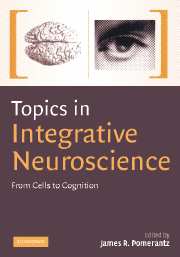Book contents
- Frontmatter
- Contents
- List of contributors
- Preface
- Overview of neuroscience, choice and responsibility
- 1 Neuroscience, choice and responsibility
- PART I HIGHER ORDER PERCEPTION
- Overview of higher order visual perception
- 2 Attention as an organ system
- 3 Cortical dynamics and visual perception
- 4 Cortical mechanisms of visuospatial attention in humans and monkeys
- PART II LANGUAGE
- PART III MEMORY SYSTEMS
- PART IV SENSORY PROCESSES
- Index
- Plate section
- References
4 - Cortical mechanisms of visuospatial attention in humans and monkeys
Published online by Cambridge University Press: 08 August 2009
- Frontmatter
- Contents
- List of contributors
- Preface
- Overview of neuroscience, choice and responsibility
- 1 Neuroscience, choice and responsibility
- PART I HIGHER ORDER PERCEPTION
- Overview of higher order visual perception
- 2 Attention as an organ system
- 3 Cortical dynamics and visual perception
- 4 Cortical mechanisms of visuospatial attention in humans and monkeys
- PART II LANGUAGE
- PART III MEMORY SYSTEMS
- PART IV SENSORY PROCESSES
- Index
- Plate section
- References
Summary
Introduction
In everyday life, the scenes we view are typically cluttered with many different objects. However, the capacity of the visual system to process information about multiple objects at any given moment in time is limited (Broadbent, 1958; Neisser, 1967; Schneider & Shiffrin, 1977; Tsotsos, 1990). This limited processing capacity can be exemplified in a simple experiment. If subjects are presented with two different objects and asked to identify two different attributes at the same time (e.g., color of one and orientation of the other), the subjects' performance is worse than if the task had been performed with only a single object (Duncan, 1980, 1984; Treisman, 1969). Hence, multiple objects present at the same time in the visual field compete for neural representation due to limited processing resources.
How can the competition among multiple objects be resolved? One way is by bottom-up, stimulus-driven processes. For example, in Figure 4.1A, the vertical line among the multiple distracter lines is effortlessly and quickly detected because of its salience in the display, which biases the competition in favor of the vertical line. Stimulus salience depends on various factors, including simple feature properties such as line orientation or color of the stimulus (Treisman & Gelade, 1980; Treisman & Gormican, 1988), perceptual grouping of stimulus features by Gestalt principles (Driver & Baylis, 1989; Duncan, 1984; Lavie & Driver, 1996; Prinzmetal, 1981), and the dissimilarity between the stimulus and nearby distracter stimuli (Duncan & Humphreys, 1989, 1992; Nothdurft, 1993).
- Type
- Chapter
- Information
- Topics in Integrative NeuroscienceFrom Cells to Cognition, pp. 77 - 118Publisher: Cambridge University PressPrint publication year: 2008
References
- 1
- Cited by



